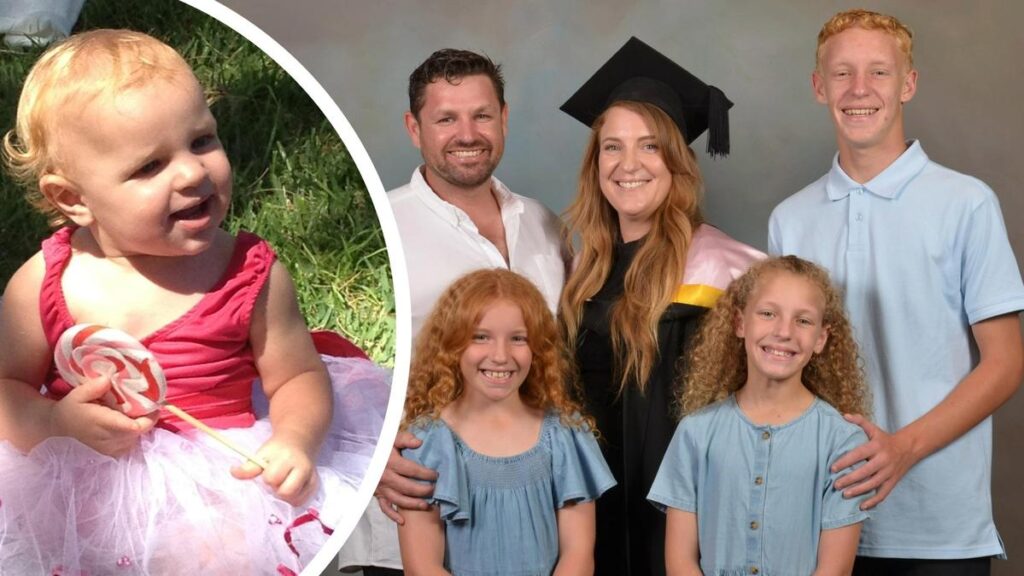
Melanie Andrews with her husband and thee children Chase Paisley and Eden. Her daughter Mylee, right, suddenly dies in her sleep.
When Melanie Andrews kissed her 15-month-old daughter Mylee goodnight, she never imagined it would be the last time. The Perth mother recalls, “We put her to bed a happy, healthy little girl and when I went to get her in the morning, she had died sometime during the night without sound or warning.” Mylee, with her strawberry blonde hair, big blue eyes, and chubby little hands, was gone, leaving her family in shock and despair.
Melanie Andrews shares her heart-breaking story ahead of Red Nose Day, a significant event that raises crucial funds and awareness for Sudden Infant Death Syndrome (SIDS) research. “I just remember whispering, ‘is this really happening’ because it seemed so surreal, and I couldn’t believe our little girl was gone,” she said.
Uncovering the Cause
For three years, Mylee’s death was classified as unexplained. However, further testing revealed an undiagnosed immune condition exacerbated by a bacterial infection. “You live with guilt every day wondering if you could have done anything different,” Andrews expressed. “To know that her death was preventable added another layer of complexity.”
This revelation became a turning point for Andrews, inspiring her to prevent other families from experiencing similar pain. “I realized that if I wanted to see a change, I had to be the change,” she said. This determination led her to the University of Western Australia, where she pursued a Bachelor of Biomedical Science, graduating with honors. Currently, she is working on her PhD.
Research and Advocacy
Melanie Andrews’ PhD research focuses on the potential links between certain bacteria, immune responses, and sudden unexplained death in childhood—a rare and devastating occurrence that continues to puzzle medical experts. “It rocked our entire world, it changed the person that I am, and it changed what I thought of life,” Andrews reflected. “With our other children, it took away the innocence that they were just going to grow up one day.”
Her ultimate goal is to ensure no family endures losing a child. “Mylee was such a happy, cheerful, bubbly little girl. She was mischievous and full of life, and we would never have had any indication that anything was wrong,” Andrews recalled.
“My ultimate goal was that no family ever felt what we did and never had to endure losing a child because it is the worst possible pain that you could imagine.”
Supporting Red Nose Day
Andrews emphasizes the importance of Red Nose Day, stating, “Getting involved and supporting Red Nose Day really supports families like mine who have lost children to get answers, and it supports other families who have little ones. Hopefully, we can prevent them from dying in the future.”
Red Nose Day, observed annually, plays a vital role in funding research and providing support for grieving families. The initiative has been instrumental in reducing the rate of sudden infant deaths, yet the work continues as researchers strive to uncover more about these tragic occurrences.
Looking Forward
The journey of Melanie Andrews is one of profound loss transformed into a mission of hope and change. Her story serves as a poignant reminder of the fragility of life and the resilience of the human spirit. As she continues her research, the hope is that her efforts will lead to breakthroughs that save lives and spare other families from experiencing the same heartache.
Meanwhile, the community rallies around causes like Red Nose Day, recognizing the power of collective action in the face of unimaginable loss. Melanie Andrews’ dedication to her research and advocacy underscores the impact one person can have in driving change and fostering hope for a safer future for children everywhere.







